
If there's one thing I could say about Armenia, it's that it loves its colours and patterns. Rugs and carpets are historically a massive influence here in this part of the world, extending beyond the current borders of Armenia and into present day Turkey and Iran. These typical household items are still in their plenty to this day, a culture that never really went out of fashion, and I love it! Each of these now present nations, and even different regions of Armenia, have their own use of colour and patterns in these creations, and I had the great experience of being able to roam through an exhibition purely dedicated to the idea of an Armenian carpet, its cultural relevance, and the history behind them. While they may just seem like a rug, there's a deep set of meanings behind them, a degree of personality that extends beyond just the idea of decoration. Being something that holds a family name to it, a date even. As well as other symbolism that adds to the speciality of owning one of these marvellous creations.

This exhibition held a large number of these carpets from the past few centuries, as well as predating the introduction of Christianity into the regions. These rugs vary in size, from being something utterly huge, dangling from above, covering the entire floor space in a room, to being small things that look more like little napkins or coasters. What surprised me, and I've seen this before here in Armenia's museums: there is a wonderful degree of trust. Those who enter the museum are of course observed to some degree by curators, but very few of the items on display are actually kept in a display. You're free to look as close as you can get, no glass barrier, no rope to keep you a few metres from the items. This is something of course quite risky, but allows you to really get a good look at these things. Allowing you to look so deep into it that you can see the handmade stitches, the patterns and mistakes, the human aspect of who these things are really made. Some of which being hundreds of years old at this point.

Much of these rugs were privately owned by someone that operated a modern rug business, a collection he held for his own enjoyment of the beauty of these items. It wasn't really made clear how he had obtained these rugs over the years, but there was a bit of text on who he was, and his thoughts on the importance of these creations, the cultural beauty of them, and why it should be held tightly to the heart. What I found interesting was how these carpets were so old, yet you could see the regional influence within them, the ways in which certain cultures had impacted their design choices, the colours used, the patterns formed. As mentioned, many of these rugs predate Christianity in the region, and the result of this is vastly unique rugs in which there is a degree of Arabic influence, as well as more European influence. As the nation grew, and became more torn between the Roman occupation, and Eastern occupation. Though despite all of this, one thing remained: the love for the carpet. An item often used to provide some comfort and warmth to the colder, more stone flooring in the older homes.

Both before and with the introduction of Christianity in the regions, the rugs would feature symbolism over life. Trees which refer to the cycle of life, the reborn aspect. The sun which provided life. Certain animals which each had their own influence. Sometimes going a bit more upfront with the religious aspects and displaying crosses on them. What I loved was seeing how diverse the patterns and themes were. So many items on display, but so much uniqueness to them all. You could stand and look at each one easily for ten minutes, going over the design, those aforementioned crafting mistakes and noticing the handmade nature of them all. How patterns may not be perfectly symmetrical, the strength of them, even seeing the ways in which moths had clearly had their way with the rugs over the centuries, likely back when they were still used in homes.

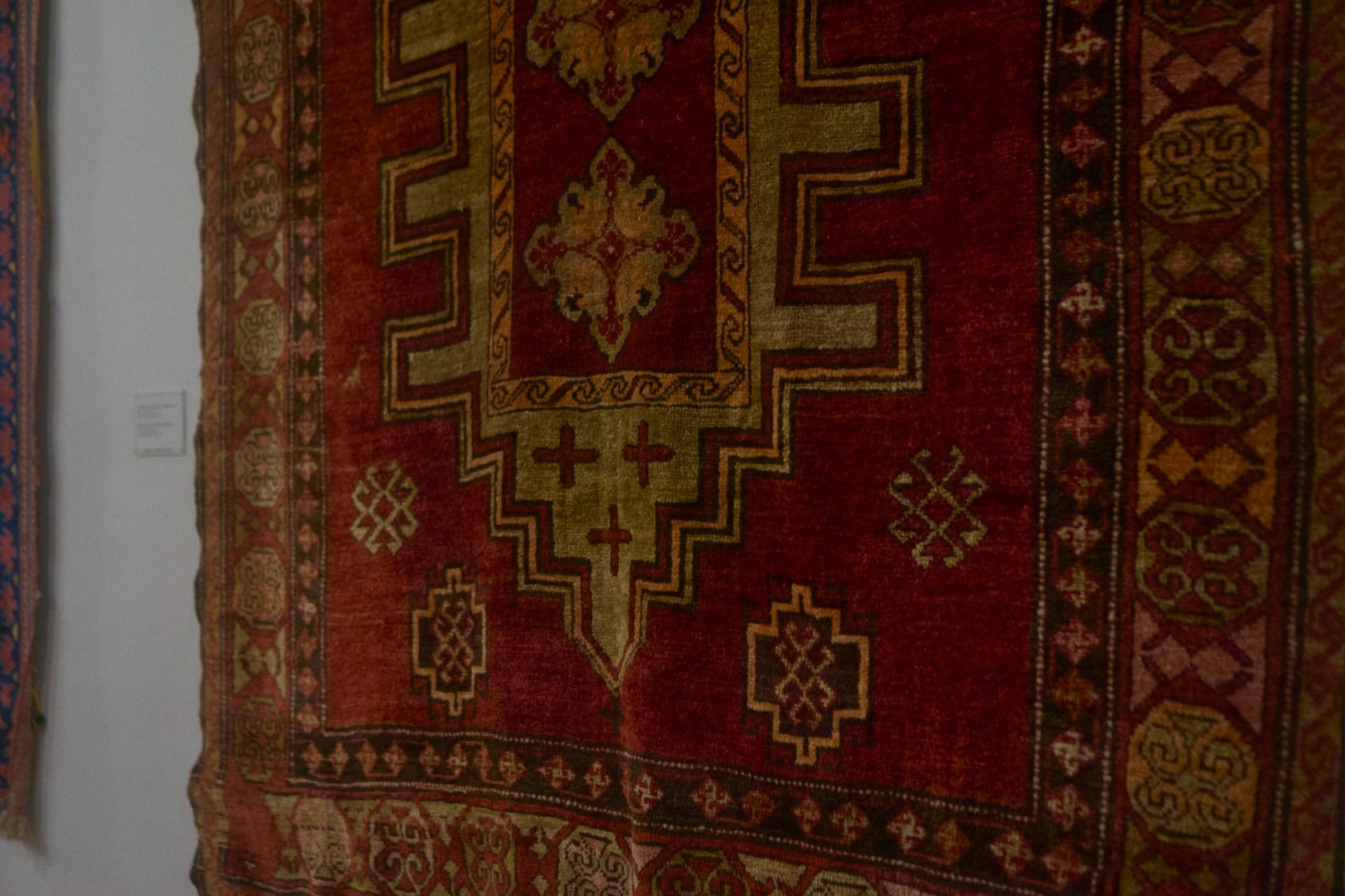
I quite liked that each room contained a plethora of rugs, but what was also nice was the total lack of large sums of text about them. Usually museums try to give you as much context as possible, a lot of depth on the history and such. There were a few of these, but the majority of the rooms just had little plaques that detailed the era of these creations, where they came from, and that was about it. It made walking through the exhibition seem more about what was actually in front of you, to admire the beauty of them rather than see them purely as items of the past. That connection again to the importance of preserving this culture in the present. Some rooms had different atmospheres to them, a bit darker, a bit brighter. One of which was a huge hall with rugs on either sides of the wall, and on one of them was the projection of a black and white film on how these rugs were made by hand. You could sit and observe the process, watching how certain tools were used, how women would make these items with certain machines. Other images detailed a completely handheld process.

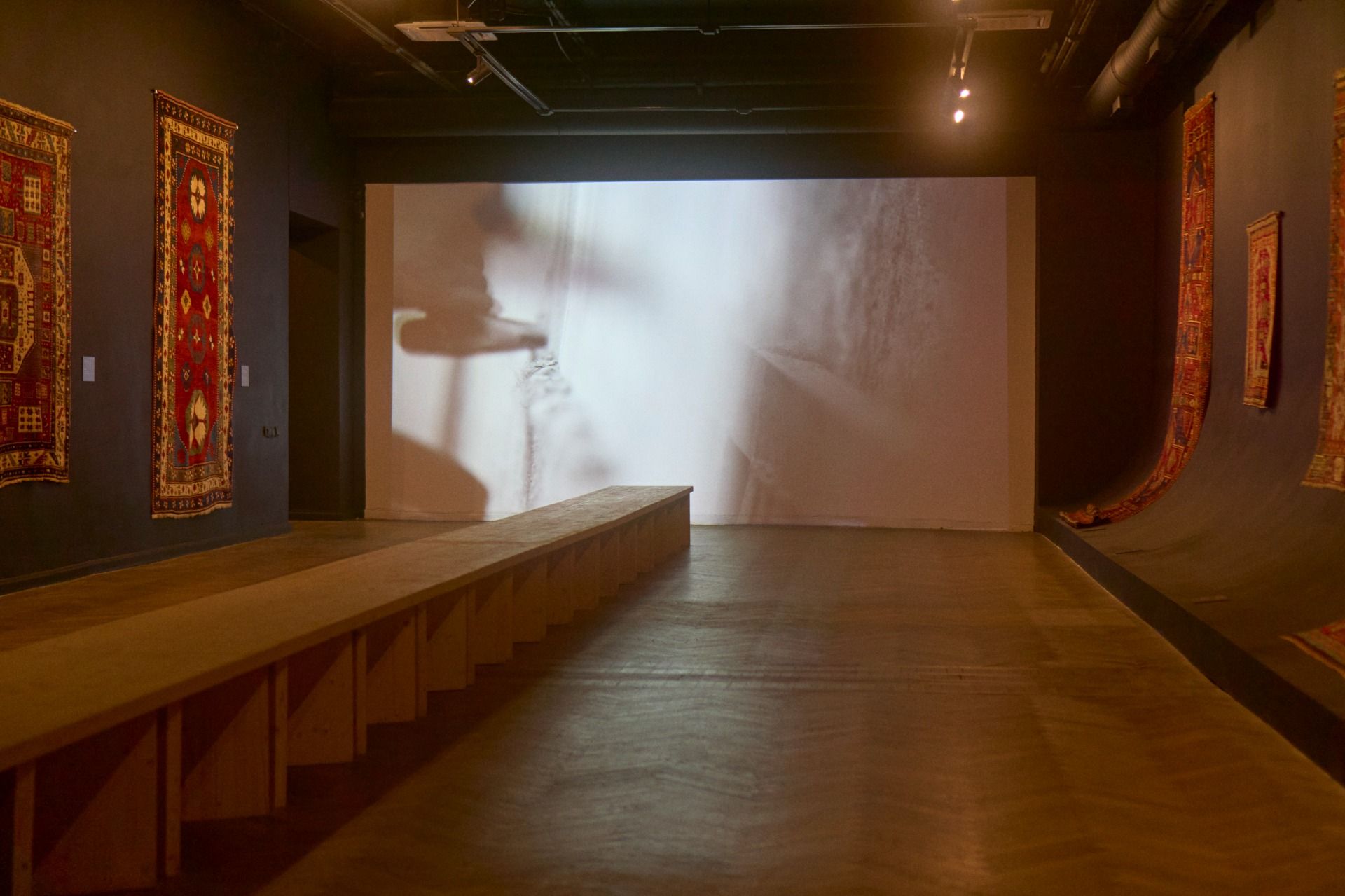
Above is the aforementioned room. You can see how some of the rugs are just dangling from above. Of course kept from touching the floor in some parts. Though this wasn't always the case. Sometimes they were almost left to hang freely, as if these were new and still in use, hardly items of the past. Only until you read the details do you see that it's actually a household item that dates back 700 years. I sat and watched the video for a while, in the other room was the machine that was used. You could actually see it, part of a rug already being made with it. Seeing how the materials obtained from animals were then used to fluff up and form into patterns, coming together to create something of great comfort. Most of the exhibition was empty in regards of visitors, but this is something I really like about the museums here. How they're mostly empty. It does give you more time to really stand and look at something, without the pressure of feeling you need to move and get out of the way for someone else.
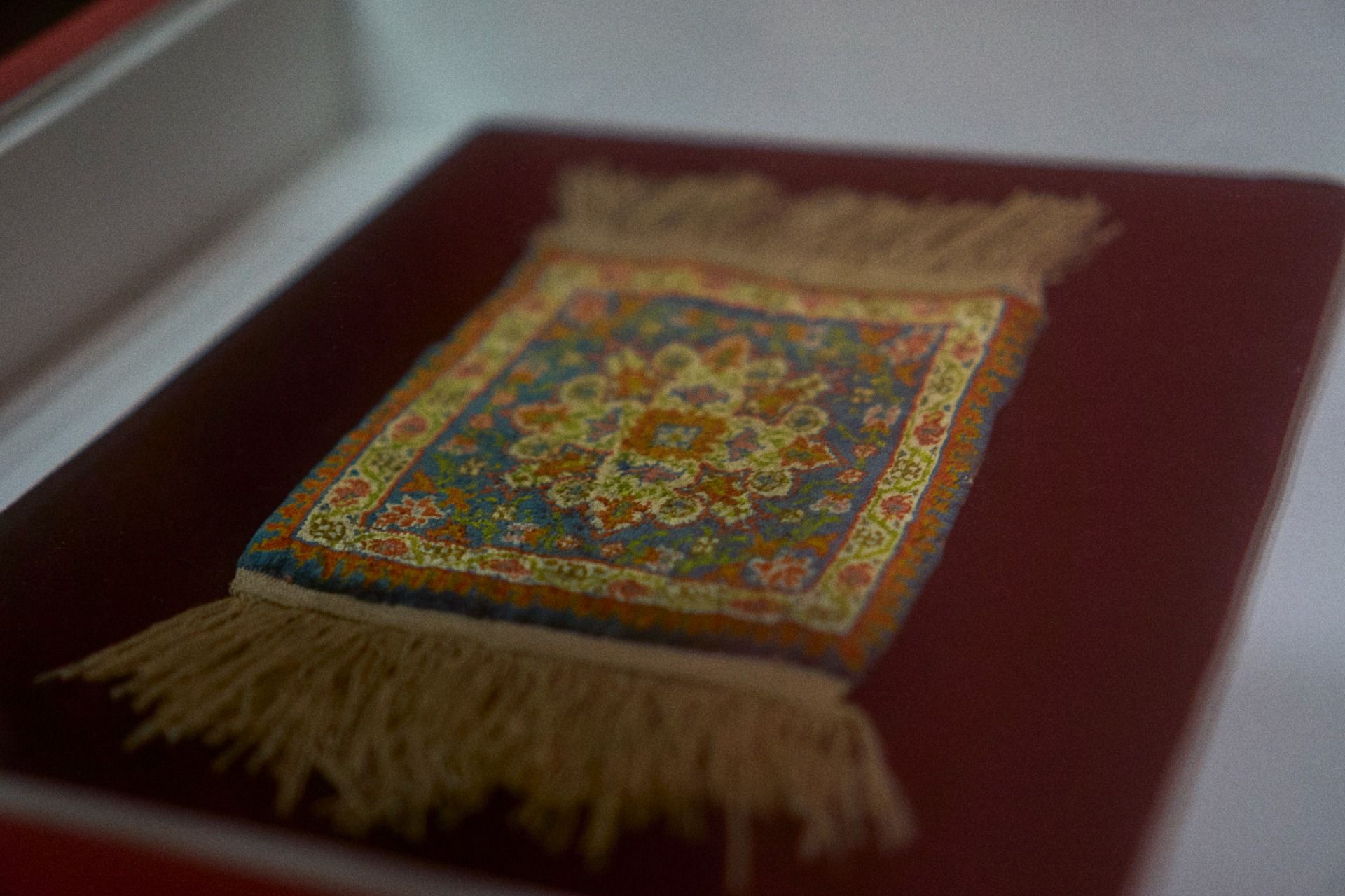
I mentioned earlier that some of the creations looked really small. This one was kept in a display, but I think for a more obvious reason: it's tiny! It did seem like something more like a coaster, something that would be used to hold something hot to relieve some of the heat on the hand. I really liked it, particularly given how impressive the little details are, the craft in it is truly something to behold. The time spent perfecting it, and how someone came to the idea of creating this, with all that experience and interest in the design. I think this is a fun contrast to what comes next: much larger rugs! The final room had a rug so huge that it was laid out on the floor, somewhat elevated so nobody could step on it. I spent ages with the camera just getting really up-close with it and taking photographs of the small details.
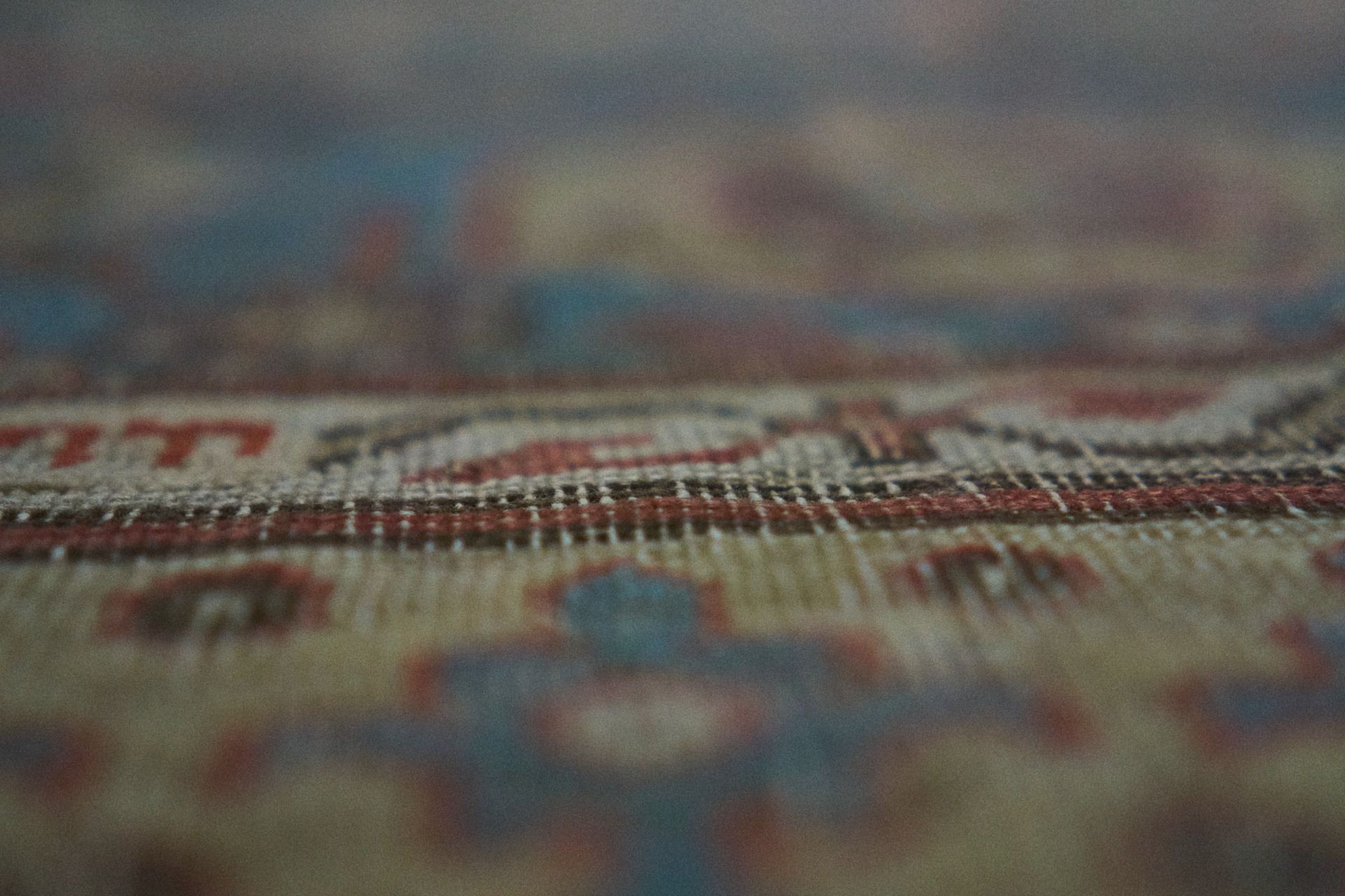

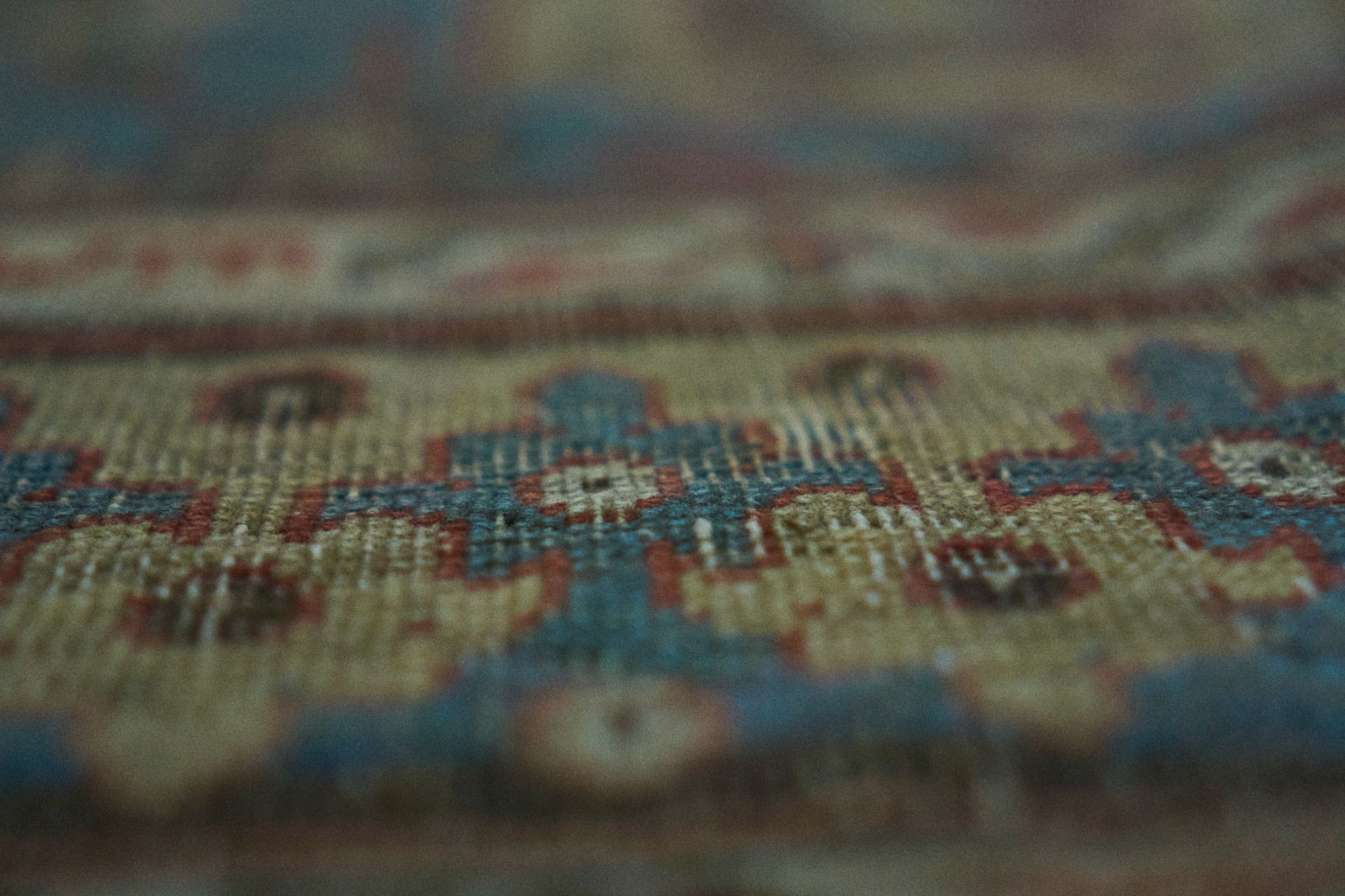


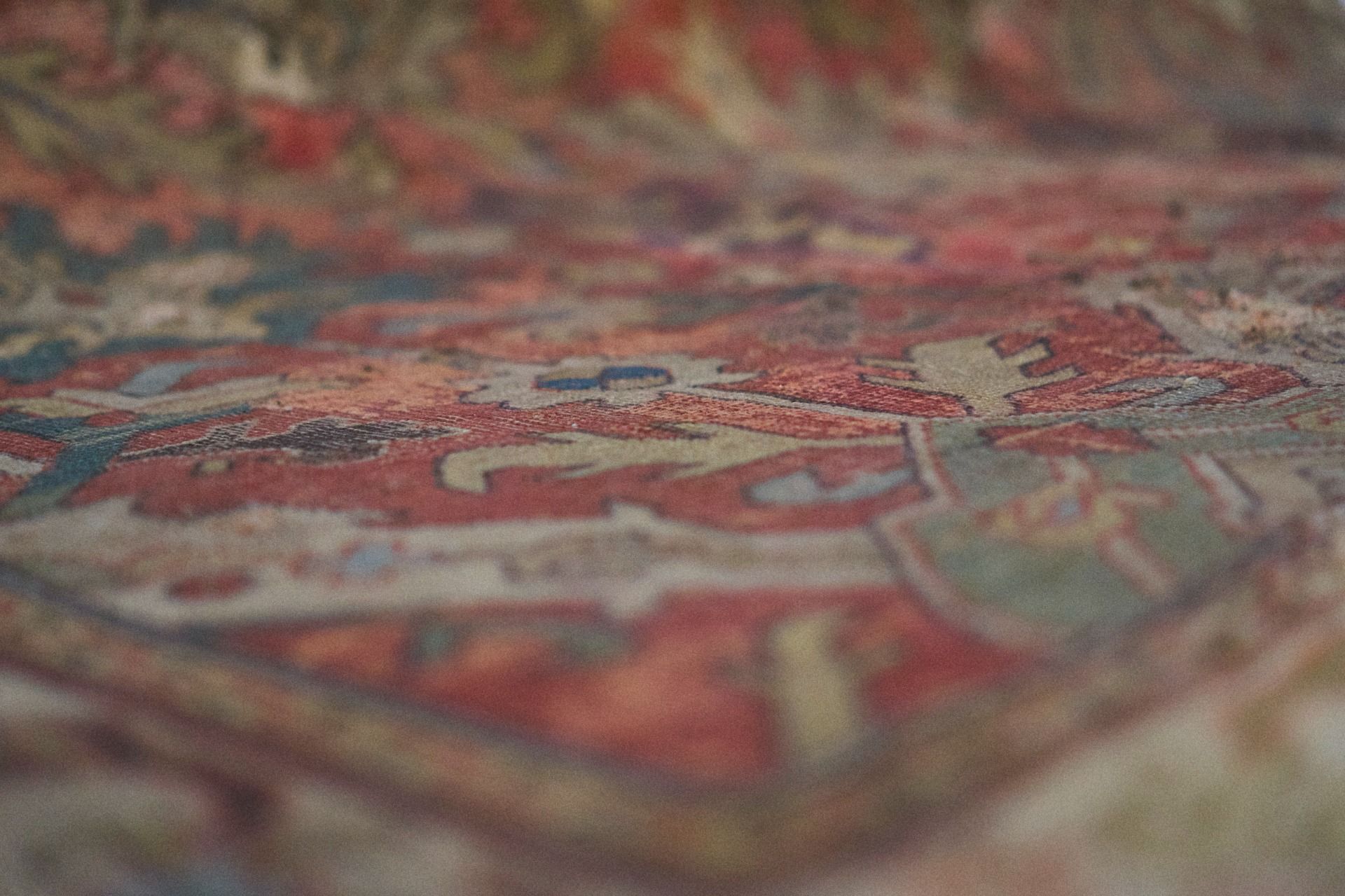
With these photographs, I used a very shallow depth of field to capture specific details. I could get close enough for the 35mm F1.8 lens to really capture the colours and provide some depth in it. Removing what's in the distance and showing the foreground, the stitching. You can really see how old these things are, the faded tones in the colour in particular. Seeing how time had aged it. I think this was a really fun end to the exhibition, as it allowed me to in a way connect with one of the pieces in a more personal manner, to find my own ways to look into the beauty and interpret them. To see them on a more direct level. Something a bit more different to them just being on the side of the wall.
In terms of celebrating the Armenian culture and tradition, I think this was a beautiful experience. Something that I came out with having felt satisfied with what I saw. Something that wasn't just old historical objects, a bit familiar with the typical museum nature. Instead it felt more personal. More appreciated. Something that was still around, still utilised. The exhibition is found in the museum of Yerevan's Republic Square, and should run for a few more months.
Travel Resources for your trip to Armenia
Recommended by TravelFeed
Flights: We recommend checking Kiwi.com to find the best and cheapest flights to Armenia.
Accomodation: Explore the best places to stay in Armenia on Booking.com, Agoda and Hostelworld.
Travel Insurance: Medical emergencies abroad can be pricey, but travel health insurance is not. We always use SafetyWing for affordable and reliable coverage.
Car Rental: For hassle-free car hiring, DiscoverCars is our trusted choice with a wide selection of vehicles.
Internet: Got an eSIM compatible phone? Airalo is perfect for reliable internet access during your trip. Just install it before you go, and you're set!
Day Trips & Tours: We recommend GetYourGuide for a variety of well-organized and enjoyable activities.
Travel Planner: Need a hand planning? Our free travel planner chatbot is your personal guide to Armenia. Chat now.
Disclosure: Posts on TravelFeed may contain affiliate links. See affiliate disclosure.

